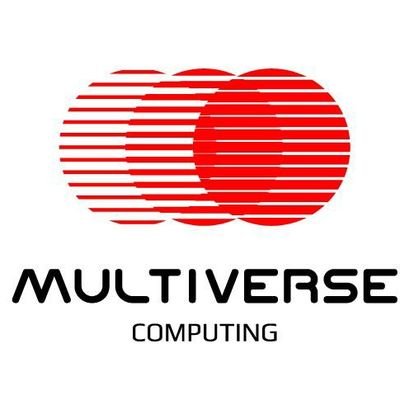Quantum News: Briefs: March 29, 2024: Multiverse Computing Joins the EIC Scaling Club Network as One of Europe’s Top Deep-Tech Scale-Ups; D-Wave Reports Fourth Quarter and Year-End 2023 Results; Zapata AI and Andretti Acquisition Corp. Announce Closing of Business Combination; BTQ Unveils New Research on Quantum Energy Advantage; Ciena (CIEN), Toshiba Team Up for Quantum Safe Technology; “3 Quantum Computing Stocks to Buy on the Dip: March 2024”; and MORE!

Quantum News Briefs: March 29, 2024:
Multiverse Computing Joins the EIC Scaling Club Network as One of Europe’s Top Deep-Tech Scale-Ups

Multiverse Computing, recognized globally for its pioneering quantum computing solutions, has been selected by the EIC Scaling Club as one of Europe’s most promising deep-tech scale-ups, set to make a significant global impact. This endorsement comes from the European Innovation Council’s EIC Scaling Club, part of a European Commission program with a budget exceeding €10 billion to accelerate the growth of leading-edge businesses. Multiverse’s selection highlights its potential within the Next-Gen Computing market. It aligns with the EIC Scaling Club’s mission to foster growth and maximize potential through fundraising support, leadership coaching, corporate partnerships, and increased media visibility. The announcement precedes the Ignition Forum event in Belgium, showcasing Multiverse among the first 48 deep-tech companies to join this elite community as the EIC Scaling Club and its partners, including Tech Tour, commit to rapidly enhancing the value and scale of these innovative enterprises.
D-Wave Reports Fourth Quarter and Year-End 2023 Results
![]()
D-Wave Quantum Inc., a leader in the quantum computing sector, has reported a noteworthy year of growth for its fiscal year ended December 31, 2023, with a series of business and technical advancements underpinning its momentum. CEO Dr. Alan Baratz emphasized the company’s commercial traction, product enhancements, scientific breakthroughs, and strategic partnerships as key drivers in establishing D-Wave as a dominant force in commercial quantum computing. The year saw significant enhancements to its leadership team and board, a new strategic collaboration with Zapata AI for quantum-enabled machine learning, and the launch of the 1,200+ qubit Advantage2 prototype. Financially, the company recorded a 34% increase in fourth-quarter bookings year-over-year, culminating in a total fiscal 2023 booking of $11.5 million—an 89% increase from the previous year. Revenue for the fourth quarter rose by 21% to $2.9 million, marking the company’s third consecutive quarter of revenue growth, with a year-end cash balance of $41.3 million, significantly bolstered by capital raises totaling $98.1 million. Looking ahead to fiscal 2024, D-Wave anticipates a reduction in its Adjusted EBITDA Loss and expects first-quarter bookings to continue the trend of substantial growth.
Zapata AI and Andretti Acquisition Corp. Announce Closing of Business Combination
Zapata Computing, Inc., known for developing advanced generative AI solutions for industrial-scale challenges, has successfully merged with Andretti Acquisition Corp., transitioning into a public entity named Zapata Computing Holdings Inc. This strategic move, which propels the company’s shares and warrants onto the Nasdaq under the symbols “ZPTA” and “ZPTAW” starting April 1, 2024, marks a significant milestone in Zapata AI’s journey since its inception in 2017. CEO Christopher Savoie highlighted the merger as a pivotal advancement towards leading the industrial generative AI revolution, emphasizing the enhanced financial flexibility and innovative edge the public status will afford the company. With a portfolio of high-profile clients and a focus on sectors ranging from telecommunications to biotech and defense, Zapata AI is positioned for robust growth. The company’s unique offering, powered by quantum-based algorithms and a full-stack development platform, sets it apart in AI, attracting interest from across industries and bolstering its mission to tackle complex computational problems.
BTQ Unveils New Research on Quantum Energy Advantage
BTQ Technologies Corp., a leading figure in quantum technology, has made a significant leap forward with its latest research on the “Quantum Energy Advantage,” showcasing quantum computing’s potential to cut energy consumption in addition to its speed benefits drastically. This Vancouver-based company has introduced a quantum proof-of-work algorithm to reduce the energy demands of blockchain technology and cryptocurrencies, presenting a vital solution to the environmental challenges posed by high energy consumption in these sectors. Highlighting a move towards more sustainable and efficient computing, BTQ’s breakthrough emphasizes quantum computing’s role in accelerating computational processes and promoting significant energy savings. This development is poised to redefine the application of quantum technology in addressing real-world problems, underlining a shift from the traditional focus on quantum supremacy towards a broader perspective that includes environmental sustainability.
Ciena (CIEN), Toshiba Team Up for Quantum Safe Technology
![]()
At the OFC Conference 2024, Ciena Corporation and Toshiba Corporation will showcase a groundbreaking demonstration of quantum secure communication by linking their booths through a secure link via OFCnet, utilizing Toshiba’s quantum secure communication platform alongside Ciena’s trusted node and multiplexing technology. This initiative aims to enhance network security over existing fiber optic cables, addressing the emerging threats of quantum technology, which can undermine current cryptographic models. The demonstration will feature using quantum keys generated by Toshiba’s QKD devices for data encryption via Ciena’s Waveserver 5 solution, enabling safe data transmission across multiple links and locations. This approach not only showcases a method to counteract potential “harvest now, decrypt later” cyber-attacks facilitated by advancements in quantum computing but also highlights the vital role of Quantum Key Management Systems (Q-KMS) in securing networks across various sites. Despite Ciena’s leadership in optical networking and the ongoing demand for increased bandwidth and cloud architecture adoption, the company has experienced a slight revenue downturn due to macroeconomic factors, reflecting a cautious outlook within the global service provider segment.
In Other News: The Conversation article: “Quantum computing just got hotter: 1 degree above absolute zero”
A new Conversation article highlights that recent advancements in quantum computing research have shown promising developments toward operating quantum bits, or qubits, at slightly higher temperatures than previously achieved. Traditionally, quantum computing has been hindered by the requirement for extremely low temperatures, just fractions above absolute zero, to maintain the quantum states necessary for computation. This has implied that significant, power-intensive refrigeration systems are needed, particularly as reliable, error-correcting quantum computers require many qubits. However, a team’s new research, published in Nature, indicates that qubits made from quantum dots with metal electrodes on silicon—a method akin to current microchip production—can operate around 1K, significantly warmer than before. This breakthrough could lead to a more manageable and cost-effective quantum computing infrastructure, reducing the massive cooling systems to a more feasible single system, thereby advancing the accessibility of quantum computing for critical applications such as drug design and material science. Despite the optimism, this development also presents new challenges, including increased error rates at higher temperatures, marking a pivotal yet intricate step towards integrating quantum computing into more widespread and practical use.
In Other News: Ars Technica article: “Quantum computing progress: Higher temps, better error correction”
![]()
In the rapidly evolving field of quantum computing, major companies like Microsoft, Intel, Amazon, and IBM, alongside numerous startups, are exploring diverse technologies to achieve error correction, a crucial aspect for practical quantum computing, states a new Ars Technica article. Recent research highlights various innovative approaches to this challenge. A study demonstrated that silicon quantum dot processors could operate at the relatively high temperature of 1 Kelvin, simplifying cooling requirements. IBM introduced a new error correction model using fewer hardware qubits through low-density parity-check codes, potentially reducing the complexity and scale of quantum computers needed for practical applications. Amazon’s research on dual-rail transmon systems showcased a novel error correction mechanism that significantly lowers inherent error rates. These advancements, among others, represent key milestones in quantum computing, indicating a vibrant and exploratory phase in the development of technologies that could eventually lead to quantum computers capable of solving complex problems far beyond the reach of current classical computers.
In Other News: Equitymaster article: “India’s Deep Tech Ecosystem: 4 Stocks to Watch Out in the Photonics Sector”

A new Equitymaster article highlights that the deep tech sector is on the verge of a significant transformation with the rise of photonics, a technology-centered on using light particles or photons, offering advantages in speed, precision, and energy efficiency over traditional electronics. With its robust economy and technological focus, India is strategically positioned to play a pivotal role in this revolution, with the Indian photonics market projected to reach $70 billion by 2026. This burgeoning industry promises to revolutionize various sectors, including telecommunications, healthcare, and manufacturing, with applications ranging from faster communication networks to non-invasive medical diagnostics. Despite the potential, challenges such as dependency on imported components, nascent manufacturing infrastructure, and the need for specialized R&D investment persist. However, government initiatives promoting domestic production and innovation and India’s potential to offer cost-effective solutions present a fertile ground for growth. Companies like Bharat Electronics, Dixon Technologies, Sterlite Technologies, and Birla Cable are identified as key players poised to benefit from this shift, underscoring the transformative impact of photonics on India’s technological landscape and its positioning on the global stage.
In Other News: Investor Place article: “3 Quantum Computing Stocks to Buy on the Dip: March 2024”
In the rapidly advancing field of quantum computing, stocks like Intel (INTC), IonQ (IONQ), and Rigetti Computing (RGTI) stand out as key players poised for significant growth, according to a recent Investor Place article. Quantum computing, heralded for its potential to perform calculations at exponentially faster rates than traditional computers through superposition, is projected to see its market valuation soar from $1.9 billion in 2022 to $42.1 billion by 2032, boasting a compound annual growth rate of 36.4%. With its robust R&D in quantum chips and a history of outperforming earnings expectations, Intel presents a solid investment opportunity. IonQ, despite its share price fluctuations, shows promise with anticipated significant revenue growth in 2024, based on its quantum computing systems accessible through major cloud platforms. Rigetti Computing, specializing in building quantum computers and providing cloud services, has seen impressive share price increases, with analysts projecting further revenue growth and a strong buy rating. These companies, driven by the transformative potential of quantum computing, offer exciting prospects for investors looking to capitalize on next-gen innovations.
Kenna Hughes-Castleberry is the Managing Editor at Inside Quantum Technology and the Science Communicator at JILA (a partnership between the University of Colorado Boulder and NIST). Her writing beats include deep tech, quantum computing, and AI. Her work has been featured in National Geographic, Scientific American, Discover Magazine, New Scientist, Ars Technica, and more.





















